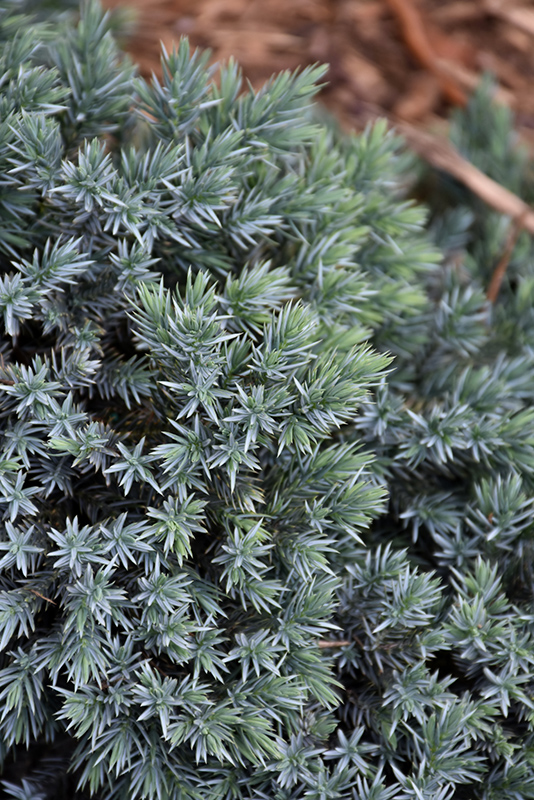Juniper, Blue Star Juniperus squamata 'Blue Star' Height: 3 feet Spread: 4 feet
Sunlight:
Hardiness Zone: 4a Other Names: Singleseed Juniper Description: An atypical and highly ornamental ball-shaped juniper with dense, silvery blue foliage radially arranged around the branches, giving the appearance of stars; an excellent color and interest plant for general garden use, good size for rock gardens Ornamental Features Juniper, Blue Star is a dwarf conifer which is primarily valued in the garden for its ornamental globe-shaped form. It has attractive blue evergreen foliage which emerges silvery blue in spring. The needles are highly ornamental and remain blue throughout the winter. Landscape Attributes Juniper, Blue Star is a dense multi-stemmed evergreen shrub with a more or less rounded form. It lends an extremely fine and delicate texture to the landscape composition which should be used to full effect. This is a relatively low maintenance shrub, and is best pruned in late winter once the threat of extreme cold has passed. It has no significant negative characteristics. Juniper, Blue Star is recommended for the following landscape applications; Planting & Growing Juniper, Blue Star will grow to be about 3 feet tall at maturity, with a spread of 4 feet. It tends to fill out right to the ground and therefore doesn't necessarily require facer plants in front. It grows at a slow rate, and under ideal conditions can be expected to live for approximately 30 years. This shrub does best in full sun to partial shade. It does best in average to evenly moist conditions, but will not tolerate standing water. This plant should be periodically fertilized throughout the active growing season with a specially-formulated acidic fertilizer. It is not particular as to soil type or pH. It is highly tolerant of urban pollution and will even thrive in inner city environments. This is a selected variety of a species not originally from North America. Special Attributes Evergreens need to be watered during the winter. Our desert climate especially in late winter to early spring evergreens can suffer during next growing season. An easy way to remember check for dryness on the holidays Halloween, Thanksgiving, New Year's Day, Valentines Day & Easter.![]()
![]()
![]()
![]()
![]()
![]()
![]()
![]()
![]()
![]()
![]()
![]()
![]()


